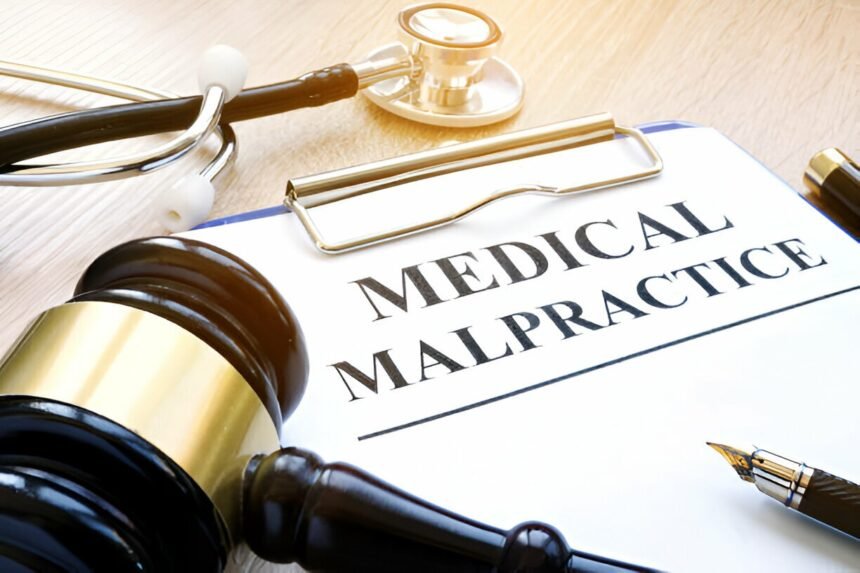Medical negligence in birth injury lawsuits can have devastating consequences for families. We will explore common types of birth injuries caused by medical negligence, such as cerebral palsy and Erb’s palsy.
We will also discuss the signs of medical negligence in birth injury cases and how to prove it in a lawsuit. Additionally, we’ll outline the steps involved in filing a medical negligence lawsuit for birth injuries, including consulting with a birth injury lawyer and participating in the discovery process.
What Is Medical Negligence in Birth Injury Lawsuits?
Medical negligence in birth injury lawsuits refers to instances where healthcare professionals, such as doctors or hospital staff, fail to meet the standard of care required during pregnancy, labor, and delivery, leading to harm or injury to the baby or mother.
What Are the Common Types of Birth Injuries Caused by Medical Negligence?
Birth injuries caused by medical negligence can include conditions such as cerebral palsy, Erb’s palsy, brachial plexus injuries, and facial nerve paralysis, each resulting from different medical errors during labor and delivery.
Cerebral palsy often happens due to inadequate oxygen supply to the fetal brain, typically from failure to monitor fetal distress, leading to motor skill impairments and developmental delays.
Erb’s palsy results from negligent handling during delivery, where excessive force on the baby’s shoulder area damages the brachial plexus nerves, causing weakness or paralysis in the arm.
Brachial plexus injuries can arise from improper use of delivery tools like forceps or vacuum extractors, causing long-term damage to the nerves controlling arm and hand movement.
Facial nerve paralysis is caused by excessive pressure or pulling on the baby’s face or head during delivery, leading to paralysis that affects facial expressions and functions.
These injuries, resulting from medical malpractice, can have devastating and long-lasting effects on a child’s physical development and quality of life.
What Are the Signs of Medical Negligence in Birth Injury Cases?
Signs of medical negligence in birth injury cases include failure to monitor fetal distress, delayed performance of a necessary C-section, improper use of delivery tools, and failure to diagnose and treat infections.
Not monitoring fetal distress properly can lead to severe complications for the baby, as early detection and intervention are crucial for preventing potential birth injuries. Delaying a necessary C-section in cases like stalled labor or umbilical cord complications can result in serious birth injuries like cerebral palsy.
Misuse of delivery tools, such as forceps or vacuum extractors, can cause injuries like facial nerve damage or brain hemorrhage.
Additionally, not diagnosing and treating infections promptly during pregnancy can lead to complications such as premature birth or stillbirth. These instances of medical negligence can have long-lasting and severe effects on the child’s health and development.
How to Prove Medical Negligence in Birth Injury Lawsuits?
Gather Evidence: Gathering evidence is essential in proving medical negligence in birth injury cases. This involves collecting medical records, witness statements, expert opinions, and photographs to show the injury, the actions of medical professionals, and the impact on the patient. Detailed documentation of dates, times, and relevant conversations is crucial.
Consult with Medical Experts: Consulting medical experts is critical as their testimony can establish whether medical negligence occurred. Medical experts review records, procedures, and outcomes to determine if the standard of care was met. Their insights help judges and juries understand medical issues and assess if healthcare providers deviated from accepted practices.
Establish the Standard of Care: The standard defines the level of care a competent healthcare provider should deliver. This standard is based on what a reasonable professional would do under similar circumstances and evolves with medical advancements. Proving negligence involves showing a deviation from this standard.
Prove Causation: Proving causation means showing that medical negligence directly caused the injury. This involves linking the healthcare provider’s actions or omissions to the harm experienced by the patient, often through expert opinions and medical records. Establishing causation can be complex, especially in birth injury cases with multiple contributing factors.
Calculate Damages: Calculating damages involves assessing the financial compensation needed to cover medical expenses, ongoing care, and other costs resulting from the injury. Factors include the injury’s severity, long-term health implications, required medical treatments, and potential future earnings loss. Accurate damage assessment ensures the affected family’s financial well-being and justice for the child.
What Are the Steps in Filing a Medical Negligence Lawsuit for Birth Injuries?
Filing a medical negligence lawsuit for birth injuries involves several important steps. First, consult a specialized birth injury lawyer who can advise and assess your case. You can start by calling 1-800-ASK-GARY to find a qualified birth injury lawyer to guide you through the process. The lawyer will review the situation, examine medical records, and determine legal options.
Next, file a formal complaint outlining the allegations of medical negligence and the resulting harm, supported by documentation such as medical records and expert opinions.
Then, participate in the discovery process, which involves exchanging information, gathering medical records, and taking depositions.
Finally, negotiate a settlement to avoid trial or, if an agreement cannot be reached, proceed to trial, where a verdict will be determined.
Settlement negotiations consider the strength of evidence, potential costs, and risks associated with going to trial, offering a quicker resolution and confidentiality. In contrast, a trial may result in a public verdict that sets a legal precedent.










